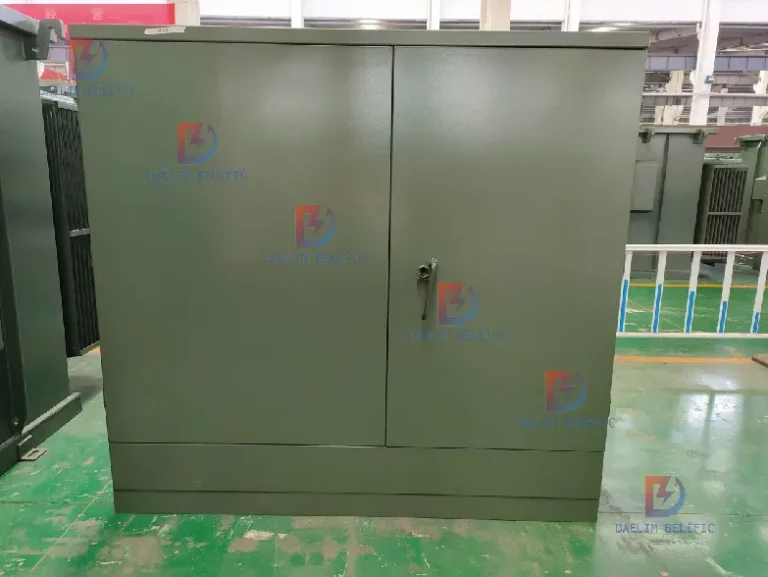ELECTRIC, WITH AN EDGE

The 750 kVa pad mounted transformer is designed to provide power to equipment up to 750kW. It will enable you to use a transformer capable of handling the high amounts of power you will be putting through your system.
The 750 kVA pad-mounted transformer is a crucial element in the U.S. power distribution network, especially in commercial and industrial sectors. These ground-level transformers stand out for their substantial capacity, embodying both reliability and accessibility. They are integral in ensuring efficient power distribution across medium to large-scale electrical systems. This section will highlight the transformer’s distinctive attributes, including its design, operational efficacy, and suitability for various applications. We will explore how this transformer aligns with real-world demands, providing practical insights into its role in modern electrical infrastructure.
In the sophisticated energy sectors of the USA and Canada, DAELIM’s 750 kVA Pad Mounted Transformer stands as a beacon of compliance and reliability. Designed to meet and exceed the most rigorous industry standards, this transformer is your assurance of quality and performance.

Our 750 kVA transformer is not just a product; it’s a testament to DAELIM’s unwavering focus on quality. To withstand the challenging North American climates and operational demands, our transformers deliver consistent performance with minimal downtime.
In a world increasingly aware of environmental impacts, DAELIM’s transformers are designed with eco-friendly materials. Our commitment to safety and sustainability ensures that our products are not just powerful but also
Recognizing the unique requirements of diverse industries, DAELIM offers for our 750 kVA Pad Mounted Transformer. Our expert team collaborates closely with clients to tailor solutions that fit seamlessly into their specific operational frameworks.
With dedicated teams in the USA and Canada, DAELIM provides localized support backed by global expertise. From installation to after-sales service, our teams are equipped to handle your needs promptly and efficiently.